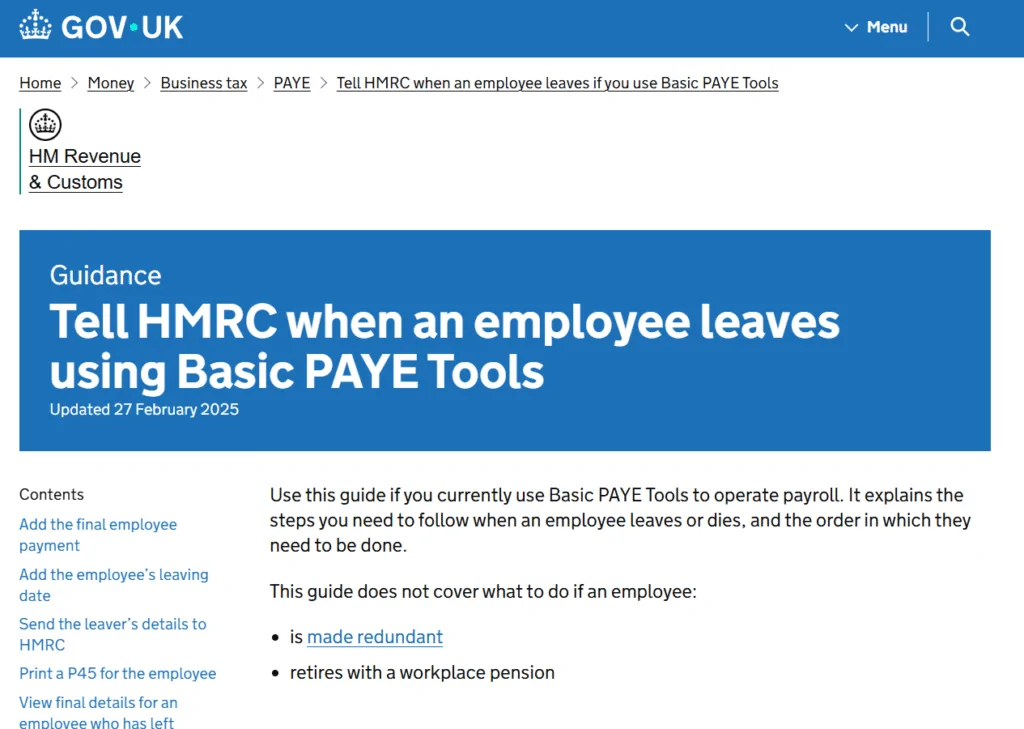P45 HMRC Form Explained – Understanding the Employee Leaving Form
The P45 HMRC form is one of the most important documents in the UK payroll system. Whenever an employee leaves a job, their employer must issue a P45. This document summarises the employee’s tax paid to date and their earnings for the current tax year. It ensures that HMRC and future employers have accurate information to calculate the correct amount of tax moving forward.
What is a P45 HMRC Form?
The P45 HMRC is a form that shows:
- The employee’s tax code and PAYE reference.
- Total pay to date in the current tax year.
- Tax paid to date in the current tax year.
- Employer details and PAYE scheme reference.
It is issued by the employer, not HMRC directly, but it must comply with HMRC requirements.
Why is the P45 Important?
- For employees – ensures they are not overtaxed when starting a new job or claiming benefits.
- For new employers – helps to set the correct tax code in payroll.
- For HMRC – ensures tax records remain accurate and up to date.
Without a P45 HMRC, an employee may be placed on an emergency tax code, often resulting in overpayment of tax.
Parts of a P45 Form
The P45 HMRC form comes in multiple parts:
- Part 1 – sent to HMRC.
- Part 1A – kept by the employee.
- Part 2 & 3 – given to the new employer to set up PAYE.
Example – How P45 Works
- Case 1 – Job Change
Jane left her role in March and received her P45 HMRC. She handed Part 2 & 3 to her new employer, ensuring her new salary was taxed correctly. - Case 2 – Claiming Benefits
Tom left his job and provided his P45 to the Jobcentre Plus when claiming Universal Credit, ensuring his tax contributions were properly recorded.
Common Mistakes with P45
Employers forgetting to issue the P45 promptly.
Employees losing their P45 before giving it to a new employer.
Employers inputting incorrect figures for pay or tax to date.
Employees starting a new role without handing over their P45, resulting in emergency tax deductions.
Recommendations for Employees and Employers
Employers should always issue a P45 HMRC immediately when an employee leaves.
Employees should check the details carefully before handing it to their new employer.
Keep a digital copy for records – HMRC may request it later.
If you lose your P45, request a “starter checklist” from your new employer and HMRC will adjust records.
FAQ – P45 HMRC
Q1: Can I get a copy of my P45 from HMRC?
No – only your employer can issue it. If lost, request a “starter checklist” instead.
Q2: What happens if I don’t have a P45?
Your new employer will use a temporary tax code until HMRC updates your records.
Q3: Is P45 still used under RTI?
Yes – while Real Time Information changed payroll, employers still provide P45s when employees leave.
Q4: Do self-employed people get a P45?
No – P45s only apply to PAYE employees.
Q5: Can Audit Consulting Group help employers with PAYE and P45s?
Absolutely – we help businesses manage payroll, ensure compliance with HMRC, and avoid penalties.
Why Choose Audit Consulting Group?
At Audit Consulting Group, we provide expert payroll and tax support. Whether you are:
- An employer unsure about issuing P45s,
- An employee needing help with PAYE records,
- Or a business looking for complete payroll management –
We ensure compliance, accurate reporting, and smooth dealings with HMRC.
HMRC guidance on P45: https://www.gov.uk/government/publications/basic-paye-tools-what-to-do-when-an-employee-leaves/basic-paye-tools-when-an-employee-leaves





